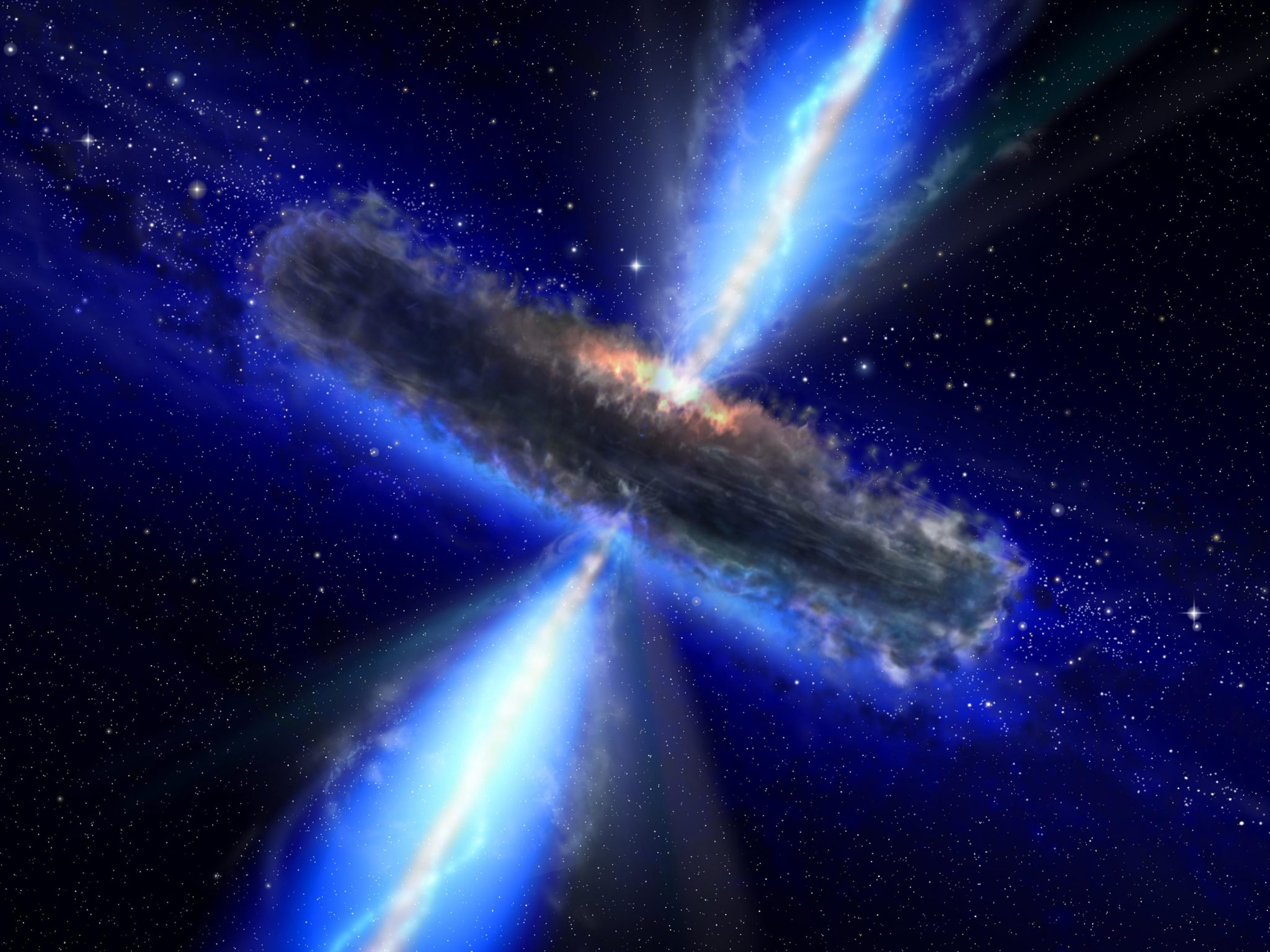Clearest Understanding Yet of the Life Cycle of Supermassive Black Holes

The doughnut-shaped ring surrounding many supermassive black holes tells researchers about how fast the space object is feeding and can change how the black hole is viewed from Earth. Credit: ESA/NASA, the AVO project and Paolo Padovani
Researchers use X-ray telescopes and a new data analysis technique to describe space objects.
Black holes with varying light signatures that were once thought to be the same objects being viewed from different angles are actually in different stages of the life cycle, according to a study led by Dartmouth scientists.
This new research on black holes known as “active galactic nuclei,” or AGNs, says that it definitively shows the need to revise the widely used “unified model of AGN” that characterizes supermassive black holes as all having the same properties.
The study provides answers to a nagging space mystery and should allow researchers to create more precise models about the evolution of the universe and how black holes develop. It was published on July 15 in The Astrophysical Journal,
“These objects have mystified researchers for over a half-century,” said Tonima Tasnim Ananna, lead author of the paper and a postdoctoral research associate at Dartmouth. “Over time, we’ve made many assumptions about the physics of these objects. Now we know that the properties of obscured black holes are significantly different from the properties of AGNs that are not as heavily hidden.”

Tonima Tasnim Ananna, postdoctoral research associate at Dartmouth College. Credit: Robert Gill/Dartmouth College
Supermassive black holes are believed to reside at the center of nearly all large galaxies, including our own, the
The new study focuses on how quickly black holes are feeding on space matter, or their accretion rates. The research found that the accretion rate does not depend upon the mass of a black hole, it varies significantly depending on how obscured it is by the gas and dust ring.

Tonima Tasnim Ananna, a postdoctoral research associate at Dartmouth College, and Ryan Hickox, professor of physics and astronomy. Credit: Robert Gill/Dartmouth College
“This provides support for the idea that the torus structures around black holes are not all the same,” said Ryan Hickox, professor of physics and astronomy and a co-author of the study. “There is a relationship between the structure and how it is growing.”
The result shows that the amount of dust and gas surrounding an AGN is directly related to how much it is feeding, confirming that there are differences beyond orientation between different populations of AGNs. When a black hole is accreting at a high rate, the energy blows away dust and gas. As a result, it is more likely to be unobscured and appear brighter. Conversely, a less active AGN is surrounded by a denser torus and appears fainter.
“In the past, it was uncertain how the obscured AGN population varied from their more easily observable, unobscured counterparts,” said Ananna. “This new research definitively shows a fundamental difference between the two populations that goes beyond viewing angle.”
The study stems from a decade-long analysis of nearby AGNs detected by Swift-BAT, a high-energy
The paper builds on previous research from the research team analyzing AGNs. For the study, Ananna developed a computational technique to assess the effect of obscuring matter on observed properties of black holes, and analyzed data collected by the wider research team using this technique.
According to the paper, by knowing a black hole’s mass and how fast it is feeding, researchers can determine when most supermassive black holes underwent most of their growth, thus providing valuable information about the evolution of black holes and the universe.
“One of the biggest questions in our field is where do supermassive black holes come from,” said Hickox. “This research provides a critical piece that can help us answer that question and I expect it to become a touchstone reference for this research discipline.”
Future research could include focusing on wavelengths that allow the team to search beyond the local universe. In the nearer term, the team would like to understand what triggers AGNs to go into high accretion mode, and how long it takes rapidly accreting AGNs to transition from heavily obscured to unobscured.
Reference: “BASS. XXX. Distribution Functions of DR2 Eddington Ratios, Black Hole Masses, and X-Ray Luminosities” by Tonima Tasnim Ananna, Anna K. Weigel, Benny Trakhtenbrot, Michael J. Koss, C. Megan Urry, Claudio Ricci, Ryan C. Hickox, Ezequiel Treister, Franz E. Bauer, Yoshihiro Ueda, Richard Mushotzky, Federica Ricci, Kyuseok Oh, Julian E. Mejía-Restrepo, Jakob Den Brok, Daniel Stern, Meredith C. Powell, Turgay Caglar, Kohei Ichikawa, O. Ivy Wong, Fiona A. Harrison and Kevin Schawinski, 15 July 2022, The Astrophysical Journal.
DOI: 10.3847/1538-4365/ac5b64
Researchers contributing to the study include Benny Trakhtenbrot, Tel Aviv University; Claudia Megan Urry,
Read More: Clearest Understanding Yet of the Life Cycle of Supermassive Black Holes

